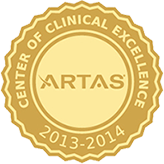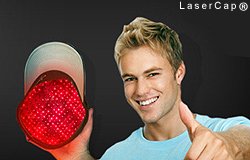

Although platelet-rich plasma (PRP) has been used for many years in other medical specialties, including orthopedics, it has only recently become popular in hair clinics. It is becoming more popular and may patients are asking for it for help with their hair loss disorders. PRP is an exciting non-surgical therapeutic option for patients who require stimulation of hair growth for hair loss conditions.
Platelet-Rich Plasma or PRP, is the latest treatment to hit the hair loss market and is showing impressive results. Dr. Bishara uses this therapy in his office for his hair transplant patients.
While PRP is in the early stages of scientific research in hair restoration, PRP is not meant to replace current FDA approved therapies such as DHT blockers and Minoxidil. but it is a promising non-surgical therapeutic option for those patients with hair loss.
There are many points of agreement on PRP including the ideal candidate for PRP: Most agree that patients with thinning but not fully balding are the best candidates. Most everyone also agrees that about 70%-90% of patients will see a degree of improvement of hair mass/density. The time that it takes for patients to see improvement in their hair growth varied from 2-6 months.
Differences in approaches: In Dr. Bishara’s office, we buy components separately and create our own kit within our office. Blood is drawn in our office, and then the blood is spun in a centrifuge. The PRP is separated and removed from the rest of the blood and then injected into the recipient site before implantation. This plasma rich in platelets and growth factors is very useful in tissue regeneration and healing. We use hypothermosol (this enables improved and extended preservation of cells, tissues and organs) at 60°C as a holding solution. Dr. Bishara does not bathe graphs in PRP before because it would increase metabolic demand in a low oxygen environment, which would kill the graft.
For more information on PRP please call our office at (817) 473-2120. This would be explained more in detail during a hair transplants consultation in our office(s) located in Mansfield and Southlake.
You can also visit us as www.MarkBisharaMD.com and our Facebook page at The Paragon Plastic Surgery and Medspa
FASTER HAIR GROWTH
Light in its various forms has been used for healing from the time of the ancient Egyptian and Greek civilizations. The negative effects of the absence of light on the human body are well documented (e.g., seasonal affective disorder, also called SAD; lack of vitamin D production; rickets, etc.). Therapy using LASER, an acronym for “light amplification by stimulated emission of radiation,” is based on the beneficial use of light for healing.
Recent advances in laser therapy devices and more research into the appropriate dosages have dramatically improved the results of this therapy.
Low-Level Laser Therapy (LLLT) is the use of red and near-infrared monochromatic light to enhance the body’s natural healing processes. The light source is placed in contact with the skin, allowing the light energy (photons) to penetrate tissue where it interacts to increase circulation and help restore normal cellular function. LLLT does not break the skin as do surgical lasers.
Pattern balding
Androgenetic alopecia can affect up to 70% of men (male pattern balding) and 40% of women (female pattern balding) at some point in their lifetime. While men typically present with a distinctive alopecia pattern involving hairline recession and vertex balding, women normally exhibit a diffuse hair thinning over the top of their scalps. For both men and women, losing their hair is a frustrating experience.
The current treatment standard for pattern balding is therapy with minoxidil and finasteride, with hair transplantation as a surgical option. However, low level laser treatment for hair loss is now also promoted as a safe alternative or additional treatment.
Benefits of laser therapy for hair loss
- Low level laser thereapy can be used in both men and women
- No adverse effects have been reported
- It is painless
- Low level laser hair therapy is relatively inexpensive
- It requires minimal time commitment
- Hair growth may occur on the top of the head/crown and along the hairline of forehead
Improvement is reported in at least some users after 12 to 26 weeks of use, with reduced hair fall and noticeable hair growth.
Learn More at: MarkBisharaMD.com or call us at (817) 473-2120

The low- level laser therapy treatment is also known as “The Cold Laser”. The laser light generated by low-powered (cold) lasers has recently come into use as a non-surgical hair restoration treatment for patten hair loss.
Laser Hair Therapy is a non-chemical and non-invasive treatment being used around the United States of hair loss. Like other treatments (such as Propecia and Minoxidil) some patients tend to respond better than others. Laser therapy has been proven to have the best results when combined with other medical therapies such as Propecia, minoxidil or finasteride. Patients that have more hair tend to have better results. Men and women both are seeing great hair response to these treatments.
Many patients experience significant improvement and report benefits such as:
- Reduction of excessive hair loss
- Improvement of hair shaft quality
- Repair of damaged hair follicles
- Thicker, easier-to-manage hair
- Reduction of excess oil production in the scalp
- Relief from itchy scalp symptoms
Low Level Light Therapy is a great treatment that can be used also have a hair transplant. The treatment cost is $3500 for 48 treatments. Please call our office for more information at (817) 473-2120 or visit our website at www.MarkBisharaMD.com.

Plastic surgeons are seeing more patients who wish to undergo facial surgery, suggesting social media-posted selfies may be inspiring more Americans to consider plastic surgery.
The growing trend of taking selfies – a type of self-portrait photograph, typically taken at arm’s length with a hand-held digital camera or camera phone – and posting them on Facebook, Twitter, Snapchat, and Instagram, has been attributed to the increase in nose jobs and other reconstructive facial procedures.
Dr. Edward Farrior, President of the AAFPRS who conducted the research that posed these assertions, states in CBS News:
“Social platforms like Instagram, Snapchat and the iPhone app Selfie.im, which are solely image based, force patients to hold a microscope up to their own image and often look at it with more self-critical eye than ever before. These images are often the first impressions young people put out there to prospective friends, romantic interests and employers, and our patients want to put their best face forward.”
According to an annual survey conducted by the American Academy of Facial Plastic and Reconstructive Surgery (AAFPRS) of a select group of the organization’s 2,700 members revealed one in three plastic surgeons reported seeing an increase in requests for facial procedures by patients who wanted to look better online.

Between 2012 and 2013 they saw a 10 percent rise in nose jobs, a seven percent rise in hair transplants and a six percent rise in eyelid surgery, says the NY Daily News. In addition, 58 percent of the doctors surveyed noted having a growing number of patients under 30 seeking out services – in part because of social media images like selfies.
Nose jobs (rhinoplasty) are the most popular elective surgical procedure conducted among those in the under 35 crowd – accounting for 90 percent of women, and 86 percent of men respectfully. And while women account for nearly 80 percent of plastic surgeries for face and eye lifts, men are becoming more determined to keep their hair and combat wrinkles.
This information is brought to you courtesy of Dr. Mark Bishara and The Paragon Plastic Surgery & Med Spa in Mansfield and Southlake, TX
Download our Free Guide on Robotic Hair Restoration
What is Hair Restoration?
Hair restoration includes the surgical and non-surgical methods used to counteract or slow symptoms of hair loss in men and women. Methods may be used individually or in combination to produce the desired results depending on a person’s needs. Finding the right hair restoration solution can be difficult. It’s an important decision that can improve your life in unimaginable ways. But one size does not fit all types of hair loss.
For Men
Getting straight answers about hair loss treatments for men can be almost as frustrating as losing your hair.
Some guys are great candidates for hair transplant surgery, others prefer the lifestyle advantages of the hair replacement process, and some simply want to prevent their existing hair from thinning any further. No matter what kind of hair loss you have, it’s an ongoing process that changes over time.
Dr. Mark Bishara’s office offers a variety of treatment options, including non-surgical and surgical.
For Women
Millions of women suffer from hair loss, more than 30 million in the U.S. alone. And while most treatments available today seem to be designed with men in mind, the good news is that there are safe, proven treatments designed especially for women.
Women’s hair–and women’s experiences with hair loss–are very different. That’s why Dr. Bishara will first assess why you are having hair loss and what option we can do to help you.
Hair Restoration Options:
PROPECIA®
PROPECIA® is available by prescription from Dr. Mark Bishara and is a once-a-day pill developed to treat mild to moderate male pattern hair loss, a hereditary condition that causes receding hairlines, thinning and/or balding on the top and front of the scalp. This product is proven effective for treating hair loss in MEN ONLY.
Low Level Laser Technology (LLLT)
The low- level laser therapy treatment is also known as “The Cold Laser”. The laser light generated by low-powered (cold) lasers has recently come into use as a non-surgical hair restoration treatment for patten hair loss.
The LaserCap® using Low Level Laser Technology (LLLT) can help men and women of all ages who suffer from hair loss by emitting pulses of laser light energy to the scalp to stimulate the hair follicles and improve blood circulation in the area, encouraging hair growth once again.
Robotic Hair Transplants- The ARTAS System
Dr. Bishara uses the ARTAS System, which is an interactive, computer assisted equipment employs image guidance to enhance the quality of hair follicle harvesting. Performed in both of Dr. Bishara’s offices (Mansfield & Southlake), FUE robotic hair transplant moves healthy, functioning follicles to the areas of the patient’s scalp most impacted by baldness. The implanted hairs develop their own blood supply, begin to grow and new hairs are seen a few months after the procedure has taken place. New hair continues to grow over the course of a full year, making the change in the patient’s appearance gradually noticeable to others. Healing time is short, and there is no resultant linear scar as happens with other methods of hair restoration, because there is no incision. This procedure is done on men and women.

Hair loss is a condition that occurs as a result of a side-effect of medication, aging, genetics, and traumatic injury to the scalp with scarring. Hair loss affects both men and women of all ages. This condition may cause pattern baldness, patchy spots or thinned hair.
Dr. Mark Bishara is proud to offer a wide range of comprehensive hair restoration procedures. Combined with his extensive experience and advanced skills, these procedures are often highly effective. The best treatment option for each patient depends on the location, cause, and extent of hair loss. Dr. Bishara will take the time to evaluate each patient, discuss his/her individual goals and together develop a personalized treatment plan using one of his many successful hair loss treatment options. Please contact our office at (817) 473-2120 for further information or visit our website at www.MarkBisharaMD.com.





